- Maintenance tips & tricks
- 4-season garden care advice
- News from the gardening world
- STIGA innovations & new product launches
FREE delivery on selected models
Free returns
Premium delivery available
FREE delivery on selected models
Free returns
Premium delivery available
Lawns form the heart of most gardens. Most lawns are made up from intricate mixes of grass varieties. But from a pollinator perspective lawns are a monoculture and although some grasses are larval plants for some moth species and grass does make pollen, grasses are wind-pollinated and not ideal food plants for most insects. However, the other plants that grow within a lawn, that you might detest, or class as weeds, are actually vital early spring food plants for our pollinator pals.
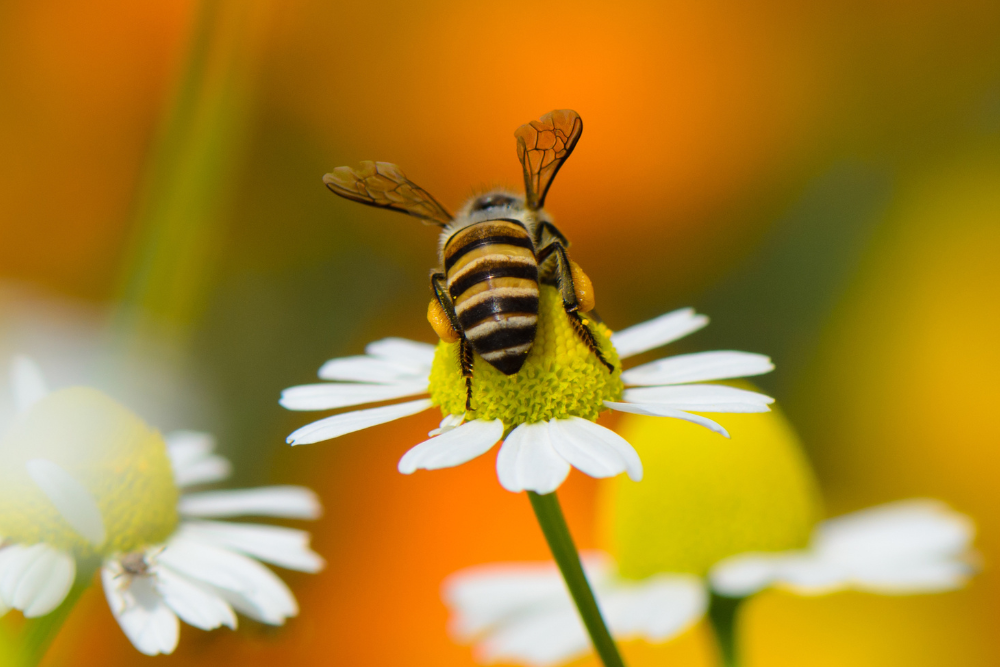
In the same way that you might allocate part of your lawn for the children or grandchildren to play, think about making a few changes for the little things.
There are lots of ways to make your lawn work much harder without spoiling the aesthetics and your enjoyment of your garden.
First lay off the pesticides and especially weedkillers.
Many of the ‘weeds’ that grow in your lawn are native wildflowers. Some of them would actually make your lawn stay green all summer if you let them grow.
Most of them are important plants not just for providing nectar and pollen if allowed to flower, but they might also be larval food plants for butterfly and moth caterpillars.
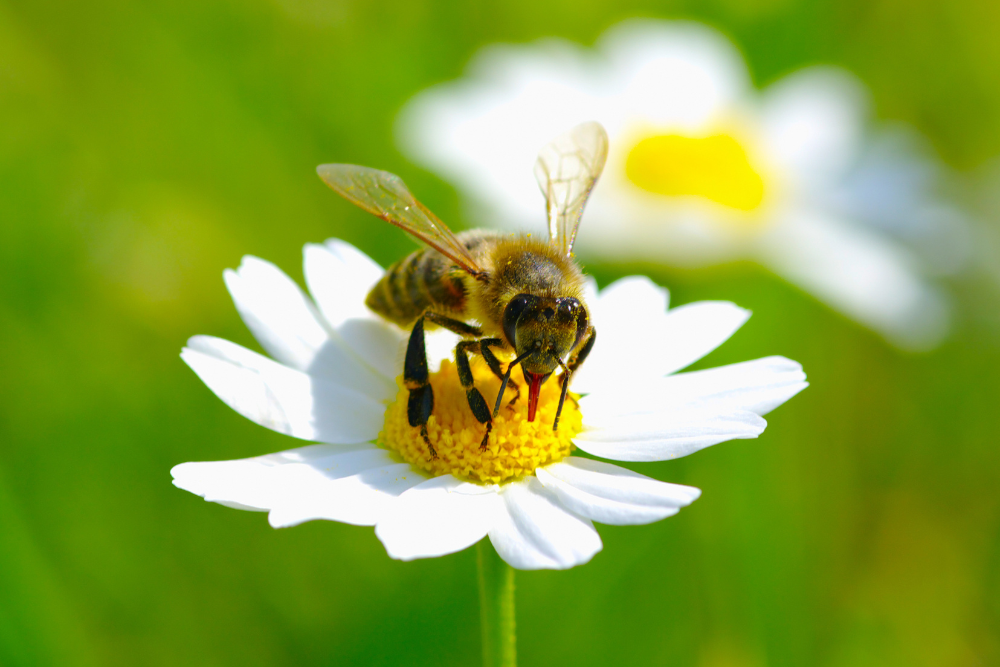
There’s nothing prettier in late spring or summer that a flowering meadow. If you leave an area of the lawn to grow and flower you will quickly achieve that soft ethereal summer meadow look, even in a small area, as the grass grows longer and wildflowers bloom.
For pollinators, this creates a whole new area of food plants. You will boost the biodiversity in your garden because the different flowers will attract different feeding pollinators.
Short-tongued bees like honeybees and some of the bumblebees will feed on white clover.
Plants like the Bird’s Foot Trefoil are particularly important for a whole range of insects. But even the dreaded dandelions are vital food plants. Their dinner plate flowers are made up of hundreds of flower tubes rich in pollen and nectar and easily accessible by most pollinators.
Daisies, self-heal, ground ivy and speedwell are all great plants for bees.
If you are able to leave a larger area to grow and flower, mow paths through it to make it easier to move around your garden. You can alternate the area you leave to flower so that different wildflowers can flourish at different points in the season.
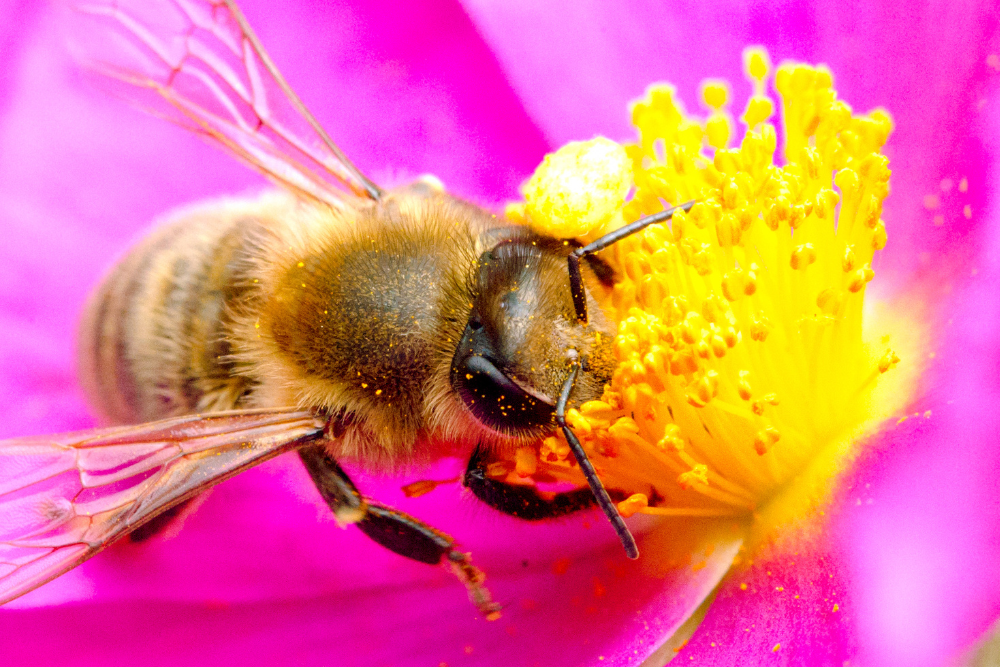
Raise the height of your cutting blades and don’t scalp the lawn. This will actually improve the health of your lawn because it will be less stressed, but it will also allow some of the wildflowers to flower.
Cutting some areas of the lawn tight is also important to support our mining bees.
Of the 275 species of bees in the UK, 60 or so are mining bees (Andrena spp) and create their nests underground. Most of these are solitary bees, though they may live in aggregation. They love well-drained sandy soil and sunny banks.
Look out for the little volcanoes of excavated soil that indicates ground-nesting bees.
Mining bees are a true garden blessing. If you have them then you are doing something right, the bees love your garden, so keep doing what you are doing.
Mow at dusk when the bees are less active.
Fire up your mower in advance warning so all creatures can move to safety before you sweep over the grass with your blades.
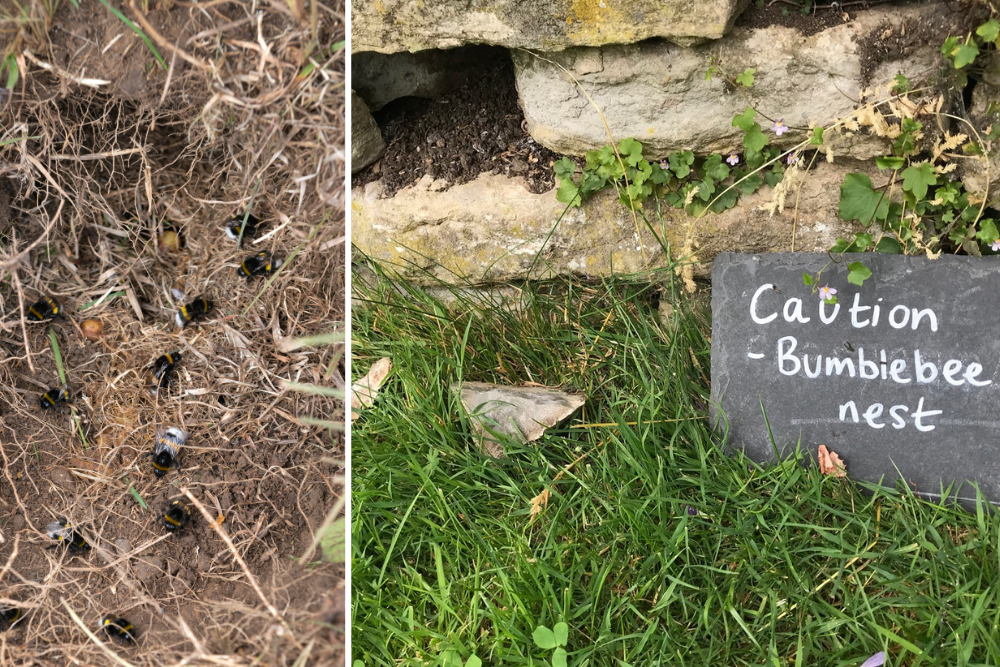
Sometimes bumblebees will choose an old rodent hole to make a nest and this could be within your lawn. The nest will be present for four or five months and then it will die out.
Try and leave it alone. Place an upturned empty wire basket over the entrance to protect the bees from inquisitive pets and if it’s somewhere that gets lots of foot traffic put a sign-up.
Bumblebees are rarely aggressive unless their nest is in danger. Enjoy the wonders of these busy bees in your garden as they collect their food from your garden flowers.
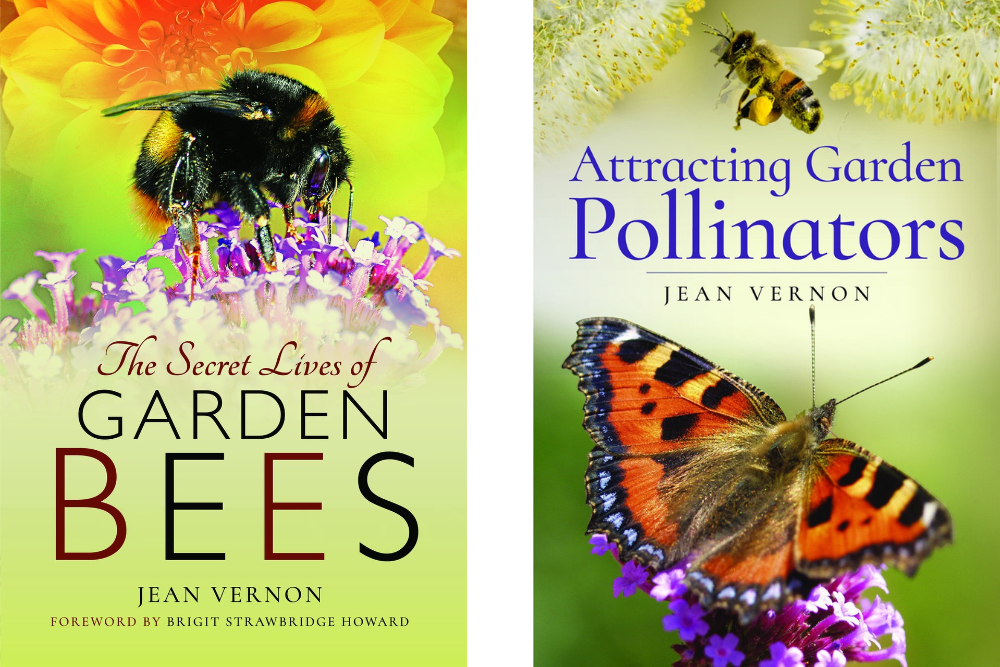
Jean Vernon is an award-winning nature writer and author of the best-selling book The Secret Lives of Garden Bees.
Follow her on Twitter @TheGreenJeanie or Instagram @addicted2bees
Her latest Bee book ‘Attracting Garden Pollinators’ was published in April 2022. Signed copies are available from her website www.TheGreenJeanie.com
Picture credits – MRM = c. Martin Mulchinock JMV = c. Jean Vernon Canva